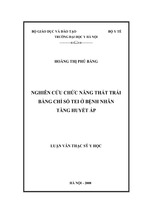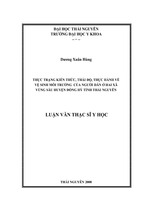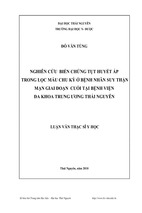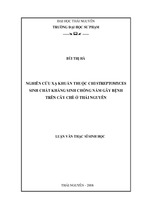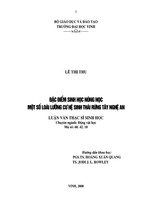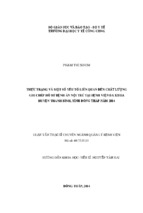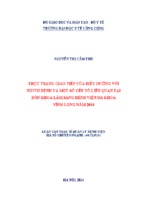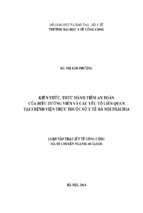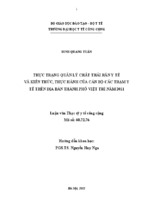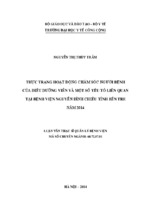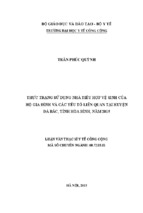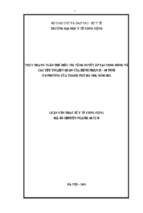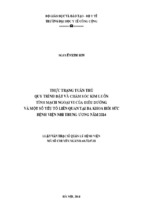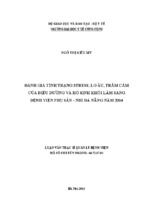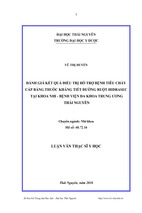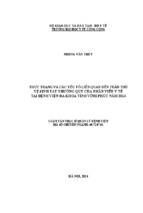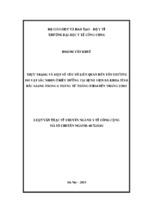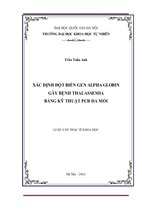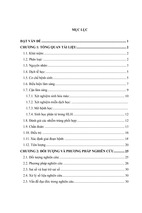Empirical Studies of Over-the-counter
Currency Option Contracts
A dissertation submitted in fulfilment of the requirements
for the degree of
Doctor of Philosophy
Alfred Huah-Syn Wong
B.Com(Qld), MFM(Qld), FRM®
Discipline of Finance
School of Economics, Finance and Marketing
Business Portfolio
RMIT University
Melbourne, Australia
December 2009
DEDICATION
With profound respect to my late father, Kee-Lieng,
and to my dearest mother, Chiew-Hiong,
in honour of their
selfless love,
trust,
support
and guidance throughout my life.
i
DECLARATION
I certify that except where due acknowledgement has been made, the work is
that of the author alone; the work has not been submitted previously, in whole or in part,
to qualify for any other academic award; the content of the thesis is the result of work
which has been carried out since the official commencement date of the approved
research program; and, any editorial work, paid or unpaid, carried out by a third party is
acknowledged.
Alfred Huah-Syn Wong
ii
ACKNOWLEDGEMENTS
This dissertation would not be completed without the generous assistance from
several individuals over the candidature period of my doctorate degree. My gratitude to
these individuals is boundless. I express my upmost appreciation to my Ph.D
supervisors at RMIT University, Associate Professor Amalia Di Iorio and Professor
Richard Heaney. Associate Professor Amalia Di Iorio is highly regarded for her work in
the area of international finance. I am grateful for her time, support and guidance on my
research. Professor Richard Heaney is a well-known and highly respected academic in
the field of finance both in Australia and overseas. His passion for research is inspiring
and I thank Richard for his constant patience, genuine interest, trust and expert guidance
on my work.
I am also thankful to several other individuals who had provided generous
research guidance at various stages of my dissertation. I thank Associate Professor Greg
Walker who had provided supervision support at the early stage of my study; Professor
Mark Morrison and Dr. Roderick Duncan at Charles Sturt University, for
encouragement and useful suggestions; Professor Alex Frino at Sydney University, for
useful discussion on data-related issues and Associate Professor Heather Mitchell at
RMIT University, for critical comments on my work. I am also indebted to Perio Musio
of UBS Investment Bank, Switzerland; John Ewan of British Bankers’ Association
(BBA), London; Eric Chan of UBS Investment Bank, Singapore and Alex Wong of
Mizuho Investment Bank, Singapore for their invaluable market insights on over-theiii
counter currency option and generous data support. Funding support from the Faculty of
Business, Charles Sturt University for the completion of this dissertation is also
gratefully acknowledged.
This Ph.D endeavour would not come to fruition without the affection, support,
encouragement and understanding from my lovely wife, Annie, who had endured many
family commitments throughout the progress and completion of this onerous task. To
my dear children, Joshua, Esther and Sarah, I thank them for the joy they bring into my
life. I am also grateful to my dear brother, Winston Wong, for help with proofreading
the early version of this dissertation.
Last but most importantly, I thank my Lord and Saviour, Jesus Christ, for His
daily blessings. His grace and mercy filled every aspects of my life.
iv
LIST OF FIGURES
Figure 2-1: Over-the-counter Foreign Exchange Derivatives by Instruments................................... 12
Figure 2-2: OTC Currency Derivatives by Instrument and Maturity................................................. 13
Figure 2-3: OTC Currency Derivatives by Currency Type ................................................................ 14
Figure 2-4: Growth of OTC and Exchange-traded Currency Options............................................... 15
Figure 2-5: AUD/USD At-the-money Forward Straddle ................................................................... 18
Figure 2-6: AUD/USD Strangle ......................................................................................................... 20
Figure 2-7: 25-delta Risk Reversal .................................................................................................... 22
Figure 2-8: AUD/USD One-Month Implied Volatility on 1 October 2003 ........................................ 24
Figure 2-9: EUR/USD Implied Volatility Term Structure .................................................................. 25
Figure 2-10: AUD/USD One-month Implied Volatility on 1 October 2003 ....................................... 27
Figure 4-1: Variance Ratio versus Maturity (q=10) .......................................................................... 93
Figure 4-2: Variance Ratio versus Maturity (q=20) .......................................................................... 93
Figure 4-3: Total RMSE versus Maturity ......................................................................................... 106
Figure 5-1: Time Series Plots of Spot Exchange Rate, At-the-money Forward ............................... 123
Figure 5-2: The Simple Moving Average Trading Rule ................................................................... 125
Figure 5-3: EUR/USD Buy and Sell Signals (Trigger Value =1) .................................................... 128
Figure 5-4: EUR/USD Buy and Sell Signals (Trigger Value =2) .................................................... 128
Figure 6-1: One-month Quoted Implied Volatility versus Delta on 21/08/2003 .............................. 165
Figure 6-2: Implied Volatility versus Moneyness (X/F) for AUD/USD ........................................... 171
Figure 6-3: Time Series Plots of Curvature and Slope Coefficients ................................................ 178
Figure 6-4: Impulse Reponses for Smile Slopes due to Volatility Shock .......................................... 199
Figure 6-5: GBP/USD Impulse Reponses for Trivariate VAR ......................................................... 201
Figure 6-6: EUR/USD Impulse Reponses for Trivariate VAR ......................................................... 202
Figure 6-7: AUD/USD Impulse Reponses for Trivariate VAR ......................................................... 203
Figure 6-8: USD/JPY Impulse Reponses for Trivariate VAR........................................................... 204
Figure 6-9: Estimated Jumps for AUD/USD .................................................................................... 208
Figure 6-10: Estimated Jumps for USD/JPY.................................................................................... 208
Figure 7-1: Movement of Implied Volatility and Smile Curvature over Time .................................. 234
Figure 7-2: Volatility Smiles for GBP/USD ..................................................................................... 235
Figure 7-3: Volatility Smile Dynamics for GBP/USD ...................................................................... 237
LIST OF TABLES
Table 2-1: A Comparison of Over-the-counter Currency Options and Exchange-traded Currency
Options .......................................................................................................................... 28
Table 4-1: Descriptive Statistics for the First-Differenced Implied Volatility Series......................... 73
Table 4-2: Augmented Dickey-Fuller (1981) and Phillips-Perron (1988)
Unit Root
Tests .............................................................................................................................. 75
Table 4-3: Autocorrelation Coefficients and the Ljung-Box Q-statistic ............................................. 76
Table 4-4: Variance Ratio Estimation and Hypothesis Testing of Unity Variance Ratios Using
Zs(q) .............................................................................................................................. 83
Table 4-5: Variance Ratio Estimation and Hypothesis Testing of Unity Variance Ratios Using
Z(q)................................................................................................................................ 85
Table 4-6: Hypothesis Testing of Unity Variance Ratios Using Ranks and Signs ............................. 88
~S
Table 4-7: Sidack-adjusted Pji -values for Ranks and Signs............................................................. 91
Table 4-8: Out-of-Sample One-day Ahead Forecast Performance for the Random Walk and
Competing Models ...................................................................................................... 102
v
Table 4-9: RMSE Ratios Relative to the Random Walk Model ........................................................ 104
Table 4-10: Diebold-Mariano (1995) Test of Equal Forecast Accuracy ......................................... 107
Table 5-1: Descriptive Statistics for At the Money Forward Straddle Quotes ................................. 120
Table 5-2: Descriptive Statistics for Risk Reversal Quotes .............................................................. 121
Table 5-3: Calculation of Total Option Premium ............................................................................ 134
Table 5-4: Naïve Models for At-the-money Forward Straddles ....................................................... 140
Table 5-5: Naïve Models for Risk Reversals .................................................................................... 141
Table 5-6: Results for At-the-money Forward Straddle Trades ....................................................... 143
Table 5-7: Results for Risk Reversal Trades .................................................................................... 148
Table 5-8: Aggregate Result for At-the-money Forward Straddles.................................................. 152
Table 5-9: Aggregate Result for Risk Reversals ............................................................................... 153
Table 6-1: Summary Statistics for the Implied Volatility Datasets................................................... 167
Table 6-2: Estimated Smile Coefficients Using Quadratic Approximation ..................................... 175
Table 6-3: Statistics for the Shape Proxies and Conditional Volatility ............................................ 180
Table 6-4: Estimated GARCH (1,1) Parameters .............................................................................. 182
Table 6-5: Granger Causality Tests on Dynamics of Volatility Smile (CF & PF) ........................... 187
Table 6-6: Granger Causality Tests on Dynamics of Volatility Smile (SKW and CE) ..................... 190
Table 6-7: Granger Causality Test on Individual Slope for Put Options ......................................... 193
Table 6-8: Granger Causality Test on Individual Slope for Call Options ....................................... 194
Table 6-9: Residuals Autocorrelation Tests for VAR (3) Model ...................................................... 197
Table 6-10: Test Results for the Trivariate VAR Model ................................................................... 197
Table 6-11: Jump Frequencies and Window Sizes ........................................................................... 207
Table 6-12: Probit Regressions for the Aggregate Sample .............................................................. 211
Table 6-13: Aggregate Results for Probit Regressions .................................................................... 213
Table 7-1: Descriptive Statistics for Implied Volatility and Estimated Series ................................. 227
Table 7-2: Phillips-Perron(1988) Unit Root Tests ........................................................................... 229
Table 7-3: Correlations Between Parameter Estimates and Implied Volatility ............................... 231
Table 7-4: Estimated Shape Proxies and Volatility Smile ................................................................ 236
Table 7-5: Univariate Regression Tests Using Shape Proxies of Volatility Smile ........................... 239
Table 7-6: Univariate Regression Tests Using At-the-money Implied Volatility ............................. 241
Table 7-7: Regression Tests Using At-the-money Implied Volatility and CF................................... 243
Table 7-8: Regression Tests Using At-the-money Implied Volatility and PF ................................... 244
Table 7-9: Regression Tests Using At-the-money Implied Volatility and AS ................................... 245
Table 7-10: Regression Tests Using At-the-money Implied Volatility and CE................................. 246
Table 7-11: Regression Tests with At-the-money Implied Volatility
and GARCH (1,1) Estimates ....................................................................................... 248
Table 7-12: Regression Tests Using At-the-money Implied Volatility with CF
and GARCH (1,1) Estimates ....................................................................................... 250
Table 7-13: Regression Tests Using At-the-money Implied Volatility with PF
and GARCH (1,1) Estimates ....................................................................................... 251
Table 7-14: Regression Tests Using At-the-money Implied Volatility with AS
and GARCH (1,1) Estimates ....................................................................................... 252
Table 7-15: Regression Tests Using At-the-money Implied Volatility with CE
and GARCH (1,1) Estimates ....................................................................................... 253
vi
ABSTRACT
It is a well-established fact that the foreign exchange market is the largest
financial market in the world1. However, it is relatively less well-known that currency
options and other foreign exchange-related derivatives have become more popular and
prominent in size since the mid-1980’s. Today, currency options are used by numerous
players in the financial market, including portfolio managers, hedgers, speculators and
even central bankers. Despite their popularity amongst market participants, research in
currency options has received little attention in comparison with options on stocks and
other underlying assets. This is not surprising as most of the currency option contracts
are written by commercial and investment banks in the privately negotiated over-thecounter option markets rather than the exchange-traded markets.
This thesis provides empirical investigations into the behaviour of implied
volatility quotes for currency options on the British pound/U.S. dollar (GBP/USD), the
euro/U.S. dollar (EUR/USD), the Australian dollar/U.S. dollar (AUD/USD) and the
U.S. dollar/Japanese yen (USD/JPY). The analyses are performed using dealer-quoted
implied volatility and spot exchange rate datasets collected from the over-the-counter
currency option market.
1
According to the Triennial Central Bank Survey conducted by the Bank for International Settlements, global foreign
exchange market recorded a daily turnover of USD3.21 trillion in April 2007 (See Table B.1 of the survey released in
December 2007).
vii
Two main aspects of the implied volatility quotes are examined in this
dissertation. First, the time series behaviour of implied volatility of various maturities is
analysed. Second, analysis concerning the dynamics of implied volatility smiles for
these four currency-pairs is undertaken.
The first empirical chapter examines the random walk hypothesis using implied
volatility quotes of various maturities. Conventional and nonparametric variance ratio
tests are performed on the volatility levels and first-differences. The results provide
evidence of random walk violations in the volatility series across all currency pairs
examined. Specifically, strong rejections are found in the short-dated volatility of one
week and one month. Further, out-of-sample robustness tests suggest that forecasting
implied volatility changes using a random walk model produce significantly higher
forecasting errors compared with two alternative models based on the artificial neural
networks (ANNs) and autoregressive integrated moving average (ARIMA) frameworks.
These findings suggest that short-dated implied volatility are better characterised as a
mean-reverting process while the random walk process captures long-dated implied
volatility more accurately.
The analysis in the second chapter extends the key findings by examining the
profitability of volatility trading using a simple technical trading strategy. This study
concludes that the trading rules generated positive returns in the majority of the
currency pairs even after allowing for volatility and exchange rate spreads. The buy
straddle signals generate positive average holding-period returns for three of the four
currency pairs examined. Further, the average holding-period return of the buy trade is
statistically different from the average holding-period return of the sell trade. This is
viii
especially evident for the USD/JPY straddles. Conversely, risk reversal trades produced
less compelling outcomes with lower winning trades and holding-period returns. Thus
the overall results suggest that moving average trading rules are useful in volatility
trading. In addition the profits from the option strategies are often large enough to offset
the transaction costs.
The third analysis chapter examines a well-known empirical anomaly in the
currency option market. Specifically, the relation between the dynamics of the volatility
smile and the anticipated volatility for the GBP/USD, EUR/USD, AUD/USD and
USD/JPY currency pairs is investigated. The analysis uses a unique trader-quoted
implied volatility dataset to construct the volatility smile over the sample period. To
fully capture the time series dynamics of the volatility smile, different measures of
volatility smile dynamics are employed, namely, (i) the slope coefficient of the call and
put volatility curves, (ii) a measure of curvature, and (iii) the degree of skewness in the
daily volatility smile. The Granger-causality tests show that the lagged coefficients for
the recursive GARCH estimates are statistically different from zero over the optimal lag
choice. This evidence of a unidirectional relationship is particularly strong when the
tests are performed using put volatility curves. The results also reveal significant
feedback between the curvature of the volatility smile and the quoted volatility. Further,
tests are performed using a trivariate vector autoregressive model and impulse response
functions to trace the impact of a volatility shock. A robustness test using probit
regression suggests evidence of predictability of jumps using the smile curvature and
out-of-money options. Consistent with recent literature, this study suggests that the
behaviour of the volatility smile is driven by trading activities induced by the
anticipated risk in the foreign exchange market.
ix
The final analysis chapter extends earlier empirical work on volatility
forecasting using information subsumed in the volatility smile dynamics. Specifically, it
combines volatility smile dynamics with corresponding at-the-money implied volatility
and GARCH(1,1) volatility estimates to forecast realised exchange rate volatility. The
relative information content of the forecasting models is analysed using encompassing
regression tests. The coefficients for smile curvature are both significant and negatively
related to the level of implied volatility. The validity of the unbiasedness and efficiency
hypothesis for the implied volatility forecasts is found to be related to the shape of the
volatility smile. In particular, when the smile effect is more pronounced, the forecast
performance of the implied volatility series deteriorates.
x
TABLE OF CONTENTS
DEDICATION ........................................................................................................................................ I
DECLARATION ................................................................................................................................... II
ACKNOWLEDGEMENTS ................................................................................................................. III
LIST OF FIGURES ............................................................................................................................... V
LIST OF TABLES ................................................................................................................................. V
CHAPTER 1 – INTRODUCTION ........................................................................................................... 1
1.1
1.2
1.3
1.4
OBJECTIVE OF THE DISSERTATION ........................................................................................... 1
MOTIVATION OF THE DISSERTATION ....................................................................................... 2
THE IMPORTANCE OF AN EMPIRICAL EXAMINATION OF OPTION-IMPLIED VOLATILITY ...... 3
SCOPE AND STRUCTURE OF THIS DISSERTATION ..................................................................... 4
CHAPTER 2 - AN OVERVIEW OF THE OVER-THE-COUNTER CURRENCY OPTION
MARKET ................................................................................................................................................... 9
2.1
INTRODUCTION .......................................................................................................................... 9
2.2
SIZE AND STRUCTURE OF THE OVER-THE-COUNTER FOREIGN EXCHANGE DERIVATIVE
MARKET ................................................................................................................................................ 11
2.3
GROWTH OF OVER-THE-COUNTER AND EXCHANGE TRADED CURRENCY OPTIONS ............ 14
2.4.
VOLATILITY TRADING IN THE OVER-THE-COUNTER CURRENCY OPTION MARKET............ 16
2.4.1 At-the-money Forward Straddles ......................................................................................... 18
2.4.2 Strangle Trades .................................................................................................................... 19
2.4.2 Risk Reversal Trades............................................................................................................ 21
2.5
DATA FROM THE OVER-THE-COUNTER CURRENCY OPTION MARKET ................................. 22
2.5.1 The BBA-Reuters Implied Volatility Data ............................................................................ 23
2.5.2 The UBS Implied Volatility Data ......................................................................................... 26
2.6
A COMPARISON OF CONTRACT FEATURES ............................................................................ 27
2.7
CONCLUSION............................................................................................................................ 29
CHAPTER 3 - LITERATURE REVIEW .............................................................................................. 30
3.1
INTRODUCTION ........................................................................................................................ 30
3.2
IMPLIED VOLATILITY ESTIMATION ........................................................................................ 35
3.2.1 Implied Volatility Estimation Error ..................................................................................... 38
3.3
THE QUALITY OF OVER-THE-COUNTER CURRENCY OPTION-IMPLIED VOLATILITY ........... 40
3.4
TIME SERIES BEHAVIOUR OF IMPLIED VOLATILITY ............................................................. 42
3.4.1 Random Walks and Implied Volatility.................................................................................. 43
3.4.2 Term Structure of Implied Volatility .................................................................................... 50
3.5
MONEYNESS EFFECT OF IMPLIED VOLATILITY ..................................................................... 52
3.5.1 Lognormal Distribution and Volatility Smile ....................................................................... 53
3.5.2 Option Trading and Volatility Smile .................................................................................... 55
3.5.3 Other Explanations for the Volatility Smile Anomaly .......................................................... 58
3.6
CONCLUSION............................................................................................................................ 60
CHAPTER 4 - FOREIGN EXCHANGE IMPLIED VOLATILITY AND THE RANDOM WALK
HYPOTHESIS ......................................................................................................................................... 61
4.1
INTRODUCTION ........................................................................................................................ 61
4.1.1 Implied Volatility Estimation ............................................................................................... 65
4.1.2 Random Walk and Foreign Exchange Volatility .................................................................. 66
4.2
RANDOM WALKS AND VARIANCE RATIO TESTS .................................................................... 66
4.3
DATA AND METHODOLOGY..................................................................................................... 68
4.3.1 Quoting Convention for Implied Volatility Data.................................................................. 70
xi
4.3.2 Descriptive Statistics ............................................................................................................ 72
4.3.3 The Conventional Variance Ratio Test ................................................................................ 78
4.3.4 The Nonparametric Variance Ratio Test ............................................................................. 80
4.4
EMPIRICAL RESULTS FOR THE CONVENTIONAL VARIANCE RATIO TEST ............................ 82
4.5
EMPIRICAL RESULTS FOR THE NONPARAMETRIC VARIANCE RATIO TEST .......................... 87
4.6
MEAN REVERSION ................................................................................................................... 91
4.7
MODEL COMPARISON TESTS .................................................................................................. 94
4.7.1 The Random Walk Model ..................................................................................................... 96
4.7.2 The ARIMA(p,1,q) Model ..................................................................................................... 97
4.7.3 Artificial Neural Networks Model ........................................................................................ 98
4.8
THE FORECAST PERFORMANCE TEST .................................................................................... 99
4.8.1 Forecast Results ................................................................................................................. 101
4.8.2 Diebold- Mariano (1995) Forecast Accuracy Test ............................................................ 106
4.9
CONCLUSION.......................................................................................................................... 109
CHAPTER 5 – VOLATILITY TRADING USING SIMPLE TRADING RULES .......................... 111
5.1
INTRODUCTION ...................................................................................................................... 111
5.2
APPLICATION OF TECHNICAL TRADING RULES ................................................................... 112
5.3
VOLATILITY TRADING IN THE OVER-THE-COUNTER CURRENCY OPTION MARKET.......... 115
5.3.1 Straddle Trades .................................................................................................................. 115
5.3.2 Risk Reversal Trades.......................................................................................................... 116
5.4
DATA ...................................................................................................................................... 117
5.4.1 Descriptive Statistics .......................................................................................................... 119
5.5
METHODOLOGY ..................................................................................................................... 124
5.5.1 Options Premia Estimations .............................................................................................. 129
5.5.2 Estimation of Holding-period Return................................................................................. 133
5.5.3 Examples of Holding-period Return Calculations ............................................................. 136
5.5.4 The Naïve Strategy and the Simple Moving Average Strategy ........................................... 138
5.6
EMPIRICAL RESULTS ............................................................................................................. 142
5.6.1 Buy and Sell At-the-money Forward Straddle ................................................................... 144
5.6.2 Risk Reversal Trades.......................................................................................................... 148
5.6.3 Straddle Aggregate Result by Trigger Values .................................................................... 151
5.6.4 Risk Reversal Aggregate Result by Trigger Values ........................................................... 153
5.7
CONCLUSION.......................................................................................................................... 154
CHAPTER 6 – THE DYNAMICS OF VOLATILITY SMILE AND FOREIGN EXCHANGE RISK
................................................................................................................................................................. 156
6.1
INTRODUCTION ...................................................................................................................... 156
6.2
VOLATILITY SMILE ANOMALY ............................................................................................. 157
6.2.1 Currency Option Trading and Volatility Smiles ................................................................ 160
6.2.2 Data ................................................................................................................................... 161
6.2.3 Implied Volatility vs Deltas ................................................................................................ 164
6.2.4 Descriptive Statistics .......................................................................................................... 166
6.3
THE VOLATILITY SMILE ....................................................................................................... 170
6.3.1 Smile Asymmetry ................................................................................................................ 172
6.3.2 Slope Coefficients for Call and Put Volatility Curves........................................................ 172
6.3.3 Measure of Skewness for Volatility Smile .......................................................................... 173
6.4
QUADRATIC APPROXIMATION OF VOLATILITY SMILE ........................................................ 174
6.4.1 Measure of Curvature for Volatility Smile ......................................................................... 175
6.5
DYNAMICS OF CURVATURE AND SLOPES COEFFICIENTS OVER TIME ................................. 176
6.5.1 Summary Statistics for Smile Dynamics ............................................................................. 180
6.6
ESTIMATION OF ONE-MONTH CONDITIONAL VOLATILITY ................................................. 181
6.6.1 Recursive GARCH(1,1) of Kroner et al (1995) .................................................................. 182
xii
6.7
VOLATILITY SMILES DYNAMICS AND FUTURE EXCHANGE RATE VOLATILITY ................. 183
6.8
EMPIRICAL RESULTS ............................................................................................................. 186
6.8.1 Bilateral Granger-causality Test along Volatility Smile .................................................... 188
6.8.2 Granger-causality Test at Individual Delta Levels ............................................................ 191
6.8.3 Trivariate vector autoregressive model ............................................................................. 195
6.8.4 Residuals Autocorrelation and Results for VAR(3) model ................................................. 196
6.8.5 Impulse Response Analysis ................................................................................................ 198
6.9
JUMPS AND THE SMILE DYNAMICS ....................................................................................... 205
6.9.1 Probit Model Analysis........................................................................................................ 209
6.9.2 Results for Probit Model Analysis...................................................................................... 210
6.10
CONCLUSION.......................................................................................................................... 214
CHAPTER 7 – FOREIGN EXCHANGE VOLATILITY PREDICTION: INTEGRATING
VOLATILITY SMILE WITH IMPLIED VOLATILITY ................................................................. 215
7.1
INTRODUCTION ...................................................................................................................... 215
7.2
SHAPES OF VOLATILITY SMILES AND VOLATILITY OF THE UNDERLYING ASSETS............. 216
7.3
PREVIOUS STUDIES ON VOLATILITY FORECASTING ............................................................ 217
7.4
DATA ...................................................................................................................................... 218
7.5
METHODOLOGY ..................................................................................................................... 219
7.5.1 The Relationship between Implied Volatility and the Shape of Volatility Smile ................ 220
7.5.2 Estimation of Realised Volatility ........................................................................................ 221
7.5.3 Estimation of Conditional Volatility .................................................................................. 222
7.5.4 The Relationship between Realised Volatility and the Shape of Volatility Smile ............... 223
7.5.5 Forecasting Realised Volatility using Smile-adjusted Implied Volatility ........................... 224
7.5.6 Forecasting Realised Volatility Using, Smile Characteristics, Implied Volatility and
Rolling-GARCH (1,1) Model .......................................................................................................... 225
7.6
DESCRIPTIVE STATISTICS ..................................................................................................... 226
7.7
STATIONARITY TESTS............................................................................................................ 228
7.8
AT-THE-MONEY IMPLIED VOLATILITY AND THE SHAPE OF VOLATILITY SMILE ............... 229
7.9
UNIVARIATE REGRESSION TEST RESULTS ........................................................................... 238
7.9.1 Regressing RV on SM......................................................................................................... 238
7.9.2 Regressing RV on IV .......................................................................................................... 240
7.10
MULTIPLE REGRESSION TEST RESULTS............................................................................... 241
7.10.1
Regressing RV on IV and SM......................................................................................... 242
7.10.2
Regressing RV on IV, SM and GV ................................................................................. 247
7.11
CONCLUSION.......................................................................................................................... 254
CHAPTER 8 – CONCLUSIONS AND FUTURE RESEARCH ........................................................ 256
8.1
8.2
8.3
8.4
INTRODUCTION ...................................................................................................................... 256
CONTRIBUTIONS OF THE DISSERTATION .............................................................................. 257
FURTHER EXTENSIONS TO THE DISSERTATION .................................................................... 259
CONCLUSION.......................................................................................................................... 261
APPENDIX A – CONDITIONAL AND IMPLIED VOLATILITY.................................................. 262
APPENDIX B – ADDITIONAL PROBIT MODEL ANALYSIS ...................................................... 263
BIBLIOGRAPHY .................................................................................................................................. 265
xiii
“Traders now use the formula [the Black and Scholes (1973) option pricing
formula] and its variants extensively. They use it so much that market prices
are usually close to formula values even in situations where there should be a
large difference.”
-
Fisher Black (1989a), The Journal of Portfolio Management, 15(2),
pp.7 and pp.8. (bracket added by the author of this dissertation)
“The language and conventions that traders in the over-the-counter currency
option markets use are borrowed from the Black-Scholes model, even though
traders are fully aware that the model is at best an approximation.”
-
Allan Malz, 1997, The Journal of Derivatives, 5(2), pp.19.
xiv
CHAPTER 1 – INTRODUCTION
1.1
Objective of the Dissertation
This dissertation provides four empirical analyses that are centred upon one
subject matter – the implied volatility characteristics of currency options. The analyses
are performed using trader-quoted implied volatility according to standard market
convention. In essence, the volatility of an asset over the remaining life of an option
contract is unobservable and thus it is often assumed to follow a random walk process.
Whether the volatility parameter can be adequately described as a random walk process
for all option maturities remains an empirical question. A better understanding of
implied volatility characteristics is critical to the pricing of currency option contracts
and offers insights into the implied volatility “smile” anomaly reported in the currency
option market.
Each analysis in this dissertation offers empirical examination of dealer-quoted
implied volatility data for options on four major currency pairs: the British pound
against the U.S dollar (GBP/USD), the euro against the U.S. dollar (ERU/USD), the
Australian dollar against the U.S. dollar (AUD/USD) and the U.S. dollar against the
Japanese yen (USD/JPY). The empirical analyses are original studies and they employ a
unique and rich option dataset from the over-the-counter market, consisting of options
with various maturities and moneyness.
1
The key objective of this dissertation is to extend existing empirical literature
on the characteristics of currency option-implied volatility. This is achieved through the
consideration of how implied volatility data at various maturities may vary over time,
investigating the use of simple trading rules for volatility trading, examining the
dynamics of the volatility smile, and finally testing the usefulness of information
embedded in the volatility smile for the prediction of realised volatility.
1.2
Motivation of the Dissertation
There are three main reasons for undertaking empirical analyses on currency
option contracts using data from the over-the-counter market. The first reason relates to
the size of the over-the-counter currency option. Most currency option contracts are
traded in the over-the-counter market. A recent survey by the Bank for International
Settlements indicates that the notional amount of the over-the-counter currency option
contracts grew from USD 9,597 billion in December 2006 to USD 12,748 billion in
December 2007 globally 2 . In sharp contrast, exchange traded currency options
amounted to USD 78.6 billion in December 2006 and rose to USD 132.7 billion in
December 2007. This survey suggests that the over-the-counter currency option is about
96 times larger than the exchange traded equivalent. The sheer size of the over-thecounter market indicates that it plays a central role in the provision of currency option
contracts to various market players. It is also potentially a more reliable source for
information extraction due to its liquidity.
2
See Table 20A, BIS Quarterly Review, March 2009.
2
Second, a clear understanding of implied volatility behaviour facilitates price
discovery for currency options and thus enhances dissemination of market information
to different participants in the over-the-counter option markets, including central banks,
hedger, speculators and arbitragers. This is crucial as market transparency is lacking due
to the highly customised nature of option contracts traded in this market. Further, recent
over-the-counter derivative losses sustained by banks imply that more careful scrutiny
of price behaviour in these markets would provide useful information to risk
management professionals and policy makers for supervisory purposes.
Third, empirical research into the price dynamics of over-the-counter currency
options is still relatively sparse. The current literature that employs information from
over-the-counter currency option markets focuses mainly on the forecasting ability of
implied volatility data in two aspects: the information content of implied volatility and
the estimation of risk-neutral density functions for exchange rates. In contrast, this
research is mainly concerned with the dynamics of implied volatility and how the
implied volatility smile relates to anticipated volatility in the exchange rate market.
1.3
The Importance of an Empirical Examination of Option-implied Volatility
An empirical study of currency option-implied volatility is important for a
number of reasons:
a) It allows a better understanding of implied volatility characteristics for different
option maturities. In practice, implied volatility varies across maturities and this
contradicts the constant volatility assumption of the Garman-Kohlhagen (1983)
currency option pricing model. However, little is known about whether or not a
3
common time series process can be used to describe implied volatility across all
maturities.
b) Empirical evaluation of implied volatility behaviour has both theoretical and
practical implications for risk forecasting, hedging decisions and the
construction of volatility trading strategies. Since implied volatility provides an
ex-ante view of an asset’s volatility over the remaining life of the option, it can
potentially forecast future volatility more accurately than volatility forecasts
based on historical data.
c) It offers a better understanding of volatility smile dynamics in terms of how the
smile is related to the anticipated risk in the currency market. This assessment
can help to explain option pricing biases that are reported in empirical studies.
d) The analysis fills a gap in the volatility forecasting literature by investigating
how the forecasting performance of at-the-money implied volatility is related to
the shape of the volatility smile. Such analysis reveals relationships that exist
between different proxies of volatility smile dynamics and how these proxies
may improve the accuracy of the implied volatility forecasts.
1.4
Scope and Structure of this Dissertation
This dissertation is structured in the following manner. Chapter 2 provides an
overview of the over-the-counter currency option market. All of the analyses presented
in this dissertation are concerned with currency options that are traded in the over-thecounter market. The chapter documents the unique features of over-the-counter
currency options, including the contract details, volatility trading strategies, market
structure and implied volatility data available from this market. It also compares
4
contract features between the over-the-counter option and the exchange-traded
equivalent.
Chapter 3 provides a broad review of the main published research papers
concerning theoretical and empirical characteristics of implied volatility, with emphasis
on currency options. It presents two main areas of literature concerning implied
volatility – first, the time series behaviour of implied volatility, and second, the
moneyness characteristics of implied volatility. The literature that constitutes the basis
of the empirical chapters (that is Chapter 4 through to Chapter 7) is briefly revisited in
each relevant chapter.
The empirical analyses are presented in Chapter 4 through to Chapter 7.
Chapter 4 is concerned with the behaviour of quoted implied volatility at various
maturities. Specifically, the chapter extends the literature dealing with implied volatility
in several aspects. First, by testing the random walk hypothesis across implied volatility
of different maturities, the implied volatility characteristics across the term structure can
be better understood. The results using in-sample tests provide evidence of random walk
violations in the volatility series across all currency pairs. Notably, rejections of a
random walk are particularly strong for the short-dated options maturing in one week
and one month. Contrary to Garman-Kohlhagen (1983) and Hull-White (1987), the
empirical evidence reported in this chapter suggests that option-implied volatility are
not constant over time and they do not always vary strictly according to a random walk
process. Second, the results from this study suggest that option pricing and volatility
models that assume a random walk component across the entire volatility term structure
are not consistent with empirical findings. Third, out-of-sample tests involving
5
- Xem thêm -

